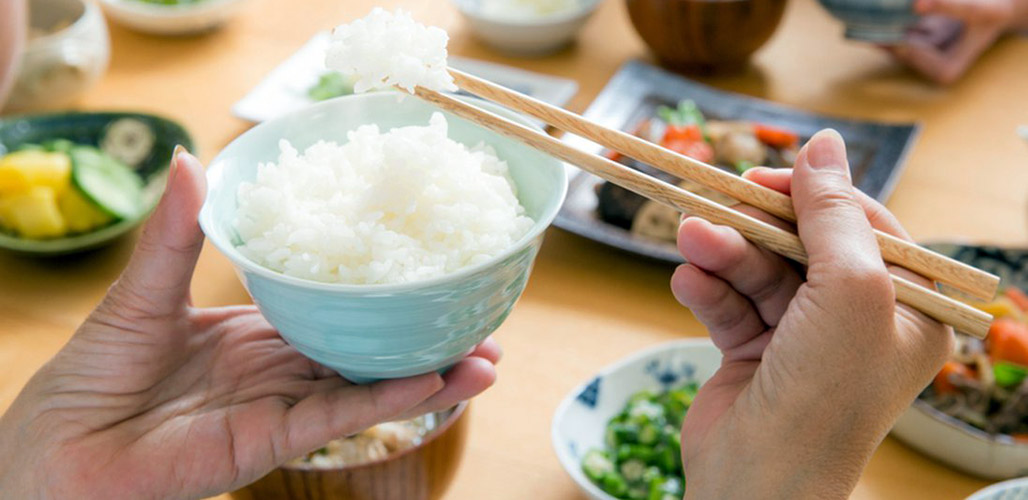Japanese Table Manner Tips and Useful Phrases
Posted by Yukiko Kisaki on 10th Nov 2018

Japanese is a culture of etiquette, with elaborate rules for table manners.The following is a brief tutorial on Japanese table manners and polite phrases, which you can practice and master reasonably quickly.Try to use them next time you are at a Japanese table. You are bound to get more attention and warm smiles in return.
"Oshibori" Hand Towel
Oshibori is the little hand towel placed neatly next to your plate. It could be hot or cold, depending on the season.
- It is proper to place the warm or cold oshibori against your eyes or temples for refreshing yourself before the meal.
- While eating, use your oshibori for wiping food off hands and fingers.
- Once you have finished, roll and place it back on its little holder tray.
Chopsticks
- Hold your chopsticks lightly, about a third of the way from the top.
- Don't stab any portion of your food with chopsticks or stick them standing in rice.
- Don't play with your chopsticks, or wave them over dishes when deciding which to choose.
- Don't use your chopsticks to point at someone or something.
- Put your chopsticks down parallel to each other; don't cross them.
Sushi
- It is entirely appropriate to pick up a sushi piece either by hand or by chopsticks.
- Pour a little soy sauce into the small “dipping” dish. Before adding wasabi to the soy sauce, check to see if the sushi pieces already contain wasabi.
- Although it is proper to mix wasabi with soy sauce, it is more appropriate to put a little dab of wasabi on your sushi, and then dip the sushi into the soy sauce.
- Eat your sushi in one bite. Breaking the sushi up into smaller pieces is considered an offense to the chef!
Sashimi
- Don't pour soy sauce over your sashimi.
- Pour a little soy sauce into the small dipping dish. Put a little dab of wasabi on your sashimi, and then dip lightly into the soy sauce.
- You can also use ground ginger instead of wasabi.
Miso Soup
- Pick up the bowl, and drink the soup out of the bowl as though if it were a cup.
- Use your chopsticks to eat the little pieces of solid foods such as tofu, etc. which come with your soup.
Noodles
- Contrary to Western etiquette, slurping the noodles into your mouth is very proper.
- Lift the noodles and guide them into your mouth with chopsticks.
- Picking up the bowl to get it closer to your mouth is appropriate, and will help.
- It is proper to lift the bowl to drink the soup.
- Noodles are the principal part of the dish, not the soup. You don’t have to drink the soup to the last drop.
Zaru Soba (Cold Soba Noodles)
- Add any condiments you like (wasabi, green onions, etc.) to the dipping sauce.
- Mix with your chopsticks.
- Pick up some soba noodles with your chopsticks. dip (whirl) in the sauce and eat.
Say hello when you walk in
konnichiwa. Make a small bow as you say it.
Call your waiter, waitress or chef
sumimasen (excuse me)
Show appreciation when served
Say itadakimasu (I humbly receive) just as you are being served or before taking the first bite or sip, while putting your hands together or bowing your head a little bit.
Say the food or drink you just tasted is delicious
oishi (delicious). You can up your appreciation by saying a more emphatic oishiiiii.
Say cheers when having a drink
kampai (cheers)
Say thank you
- domo (Thanks).
- arigato (Thank you).
- domo arigato (Thank you much).
- domo arigato gozaimas (Thank you very much).
When you've finished
gochiso-sama deshita (It was abundant.) Say it to your host, chef and even the cashier.
Bid farewell
sayonara (goodbye)

